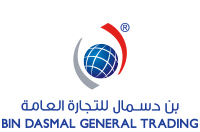As the demand for vertical infrastructure in the UAE continues to rise, so does the complexity of building services and fire safety systems. High-rise buildings rely on uninterrupted power delivery for essential equipment, including HVAC systems, fire alarms, emergency lighting, and communication lines. To ensure system integrity during fire events, the installation of fire-rated enclosures for electrical cables has become a critical part of mechanical and electrical design standards.
Professionals across MEP disciplines are increasingly coordinating with an experienced AC products supplier to integrate fire-rated enclosure systems that align with performance, compliance, and system integration requirements.
Fire safety mandates and cable path protection
Local codes such as the UAE Fire and Life Safety Code of Practice mandate the protection of life-critical electrical infrastructure. When a fire occurs, cable insulation alone is not sufficient to prevent circuit failure under high temperatures. This is where fire-rated enclosures, comprising thermally insulated cladding systems, wraps, or ductwork, provide extended protection by containing heat and flame exposure.
In high-rise projects, these enclosures are installed in core shafts, service risers, and designated fire-rated zones to protect main power supplies, HVAC control wiring, and auxiliary communication networks. Their role is not just passive protection, but the active preservation of essential building functions throughout the duration of a fire emergency.
Material properties and system design considerations
Fire-rated enclosure systems typically incorporate mineral wool boards, intumescent coatings, or fire-resistant blankets, all of which are capable of withstanding prolonged thermal exposure. These materials must meet fire resistance classifications such as EI-60, EI-90, or EI-120, depending on the building’s use and design.
Working with a technically competent AC products supplier ensures that the selected enclosure solution meets both mechanical performance and local regulatory benchmarks. Materials must maintain structural integrity, resist moisture, and be compatible with cable tray supports, suspension hardware, and sealing components.
In HVAC applications, this is especially relevant for power cables supplying air handling units, fan coil systems, and other mechanical plant components that must remain operational during fire scenarios.
Installation coordination and inspection protocols
Incorporating fire-rated enclosures into the construction timeline requires early-stage coordination between fire consultants, electrical engineers, and HVAC teams. Incorrect placement or specification errors can delay civil defense approvals or compromise safety outcomes.
Clear documentation, tested installation procedures, and certified system components are key deliverables often coordinated with the AC products supplier to ensure smooth project handover and long-term maintainability.
Routine inspection of these enclosures is also mandated under fire safety audits, making durability and accessibility essential during material selection.
Aligning AC infrastructure with fire safety standards
In modern high-rise construction, ensuring electrical cable protection is integral to operational safety and system continuity. Fire-rated enclosures offer engineered protection for essential services, particularly for HVAC systems that must function under emergency conditions.
By sourcing compliant and field-tested materials through a qualified AC products supplier, building owners and contractors can meet UAE fire safety regulations while safeguarding core infrastructure during critical moments. As building service integration becomes more interconnected, the role of enclosure systems in high-rise safety continues to expand in both scope and importance.
Tags: AC product suppliersCategorised in: AC Products Supplier
This post was written by Second Admin


Comments are closed here.